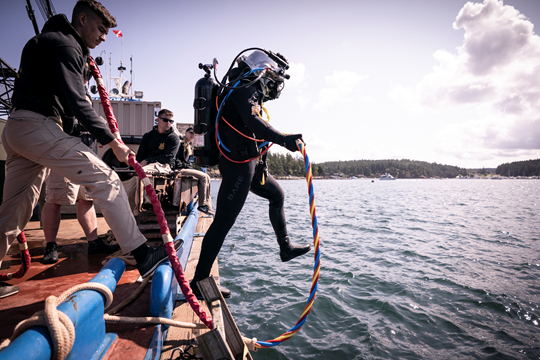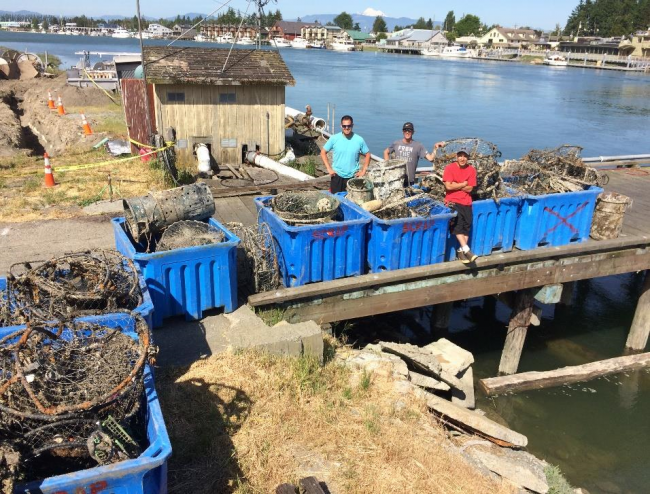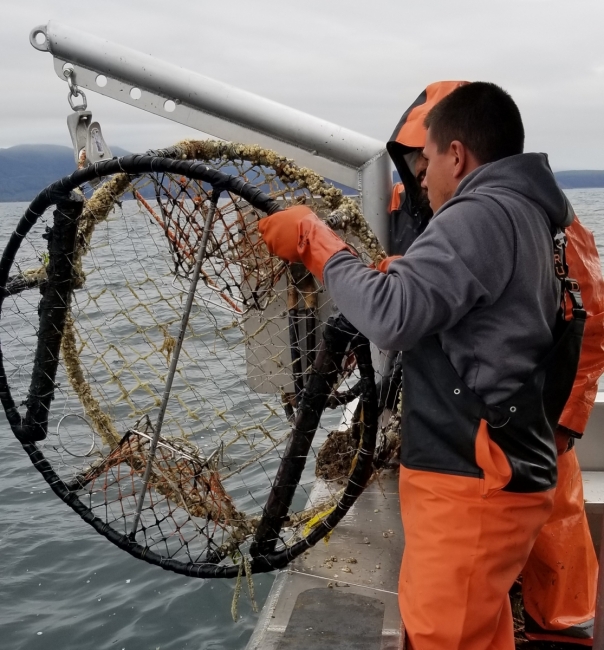The coastal waters of the Pacific Northwest are known for their combination of remote beauty and rich marine life, providing the foundation for multiple industries. This unique area spans over 4,400 miles of coastline and falls within the Cascadia bioregion, a region that includes the Columbia river watershed and Cascade mountain range. Despite all this natural beauty, lurking below the waves and along the rocky and sandy shores of Oregon and Washington a common issue can be found: marine debris. Whether it is in the form of miniscule fragments of plastic or abandoned and derelict vessels, it is certain that this is a global issue that affects us all. Thankfully, our partners in the Pacific Northwest are working hard every day to address marine debris through prevention, research, removal, and collaboration.
Derelict fishing gear, or nets, lines, pots, and other equipment lost or discarded in the marine environment, has a number of harmful impacts, including wildlife entanglement, habitat destruction, and ghost fishing, when derelict gear continues to trap and kill after it’s lost. In Washington, the Northwest Straits Foundation is continuing their efforts to catalog and remove derelict crab pots in both Dungeness and Port Townsend Bays in Washington. Additional project activities include targeted outreach to recreational crab fishers and measuring the rate of crab pot loss in the Salish Sea.

In Neah Bay, Washington, within the Olympic Coast National Marine Sanctuary and the Makah Tribe’s Usual and Accustomed Fishing Area, the Makah Tribe is finishing up a project to remove derelict crab pots and lines using reports of observed lost gear from local fishermen. The retrieved crab pots and lines are brought to shore, where the crab pots are recycled for further use or for scrap metal. Further north, the Swinomish Indian Tribal Community is removing derelict crab pots from the Swinomish Channel using tribal SCUBA divers with plans to expand removal activities into Similk Bay. The project team will reuse and recycle as much recovered gear as possible and promote marine debris awareness in order to reduce the impacts of derelict fishing gear in Similk Bay.
The Oregon State Marine Board, leveraging their Certified Clean Marina Program, is working to enhance their Abandoned Vessel Removal Assistance Program to remove problematic boats before they sink and become increasingly more hazardous to the environment and expensive to remove. Vessel removal assistance is available to marinas who are committed to best management practices to prevent future abandoned and derelict vessels. Tune into the blog later this week to learn more about this program.
The prevention of marine debris must be the ultimate goal in addressing this issue. Zero Waste Washington is working with four cohorts of high school students from the Duwamish River Valley Youth Corp Program to learn about the marine debris issues specific to their communities and video production skills. Students will use their new training to produce marine debris educational materials, including a video for their communities.

(Credit: Grassroots Garbage Gang).
Regardless of the form it takes, the passion, dedication, and environmental stewardship of people in the Pacific Northwest never ceases to amaze. With over 250 combined community identified marine debris actions across the Oregon and Washington Marine Debris Action Plans, it is clear how important addressing marine debris is to the people of the Pacific Northwest. It is also a testament to the scope and size of the task ahead of us. There is always room for more people to contribute to addressing the issue of marine debris through citizen/community science, beach cleanups, and outreach and education. The next time you visit a clean Oregon or Washington beach, know that it is because of the ongoing efforts of your friends and neighbors.



Thanks for the update on community cleanups in Oregon and Washington. Three of the four goals mentioned seem to have been addressed robustly (research, removal, collaboration). However, besides producing more educational materials, what quantitative methods have been developed to actually PREVENT marine litter? Are any laws being broken that can be addressed and acted on, or are your efforts strictly geared toward voluntary compliance?